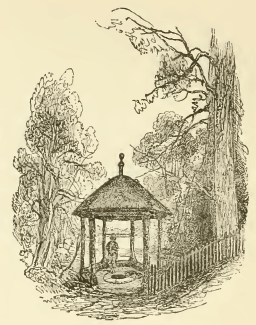St. Blaise's Well facts for kids

St. Blaise's Well
|
|
| Coordinates | 51.40387,0.02266 |
|---|---|
| Location | Bromley Palace |
St Blaise's Well is a special old well located in the grounds of the former Bishop's Palace. This palace used to be where the Bishops of Rochester lived until 1845. Today, the well is part of the Bromley Civic Centre in Bromley, London. People often called it a "holy well" because they believed its water had healing powers.
Contents
The Story of St Blaise's Well
An Ancient Spring
It seems a natural spring was already here around 750 AD. This was when King Ethelbert II of Kent gave the land to Bishop Eardwulf. A well was later built a short distance from the spring. Oak trees marked its location.
Water with Special Powers
The water from this well was special because it was "chalybeate." This means it contained tiny bits of iron. People believed this iron-rich water could help heal illnesses. It became famous for its healing properties.
A Place for Pilgrims
Over time, the well became a popular spot for pilgrimage. People would travel there for its healing water. A small chapel, called an oratory, was built nearby to honor Saint Blaise. Saint Blaise was important because he was the patron saint of the wool trade. Bromley and the surrounding area depended a lot on wool.
Visitors came not only for the water but also for a special religious benefit. The Pope offered a "remittance of penance" for 40 days. This meant that if people confessed their sins and prayed at St Blaise's Chapel during the three holy days of Pentecost (Whitsun and the two days after), they would receive this spiritual reward.
Lost and Found Again
After the Reformation, the chapel fell apart. The well was no longer used and eventually became buried and forgotten. But in 1754, a chaplain named Mr. Harwood rediscovered it. He noticed a yellow, muddy trail leading from the spring to the moat. This trail showed where the well's water used to flow.
Testing the Water
In 1756, a surgeon named Thomas Reynolds studied the well's water. He did many tests to check its medicinal qualities. He even wrote that the water from St Blaise's Well had more minerals than the famous water from Tunbridge Wells.
Reynolds also shared how the well was found again. He wrote that the iron-rich water came from the bottom of a small hill. This spot was very close to the Bishop of Rochester's palace in Bromley. The water flowed out of pure white sand. When they dug around it, they found old oak planks. These planks were steps leading down to the well. They looked like they had been underground for many years.
When the Bishop learned that the water was a good "chalybeate," he quickly ordered it to be protected. He had it enclosed in a round brick structure, like the top of a well. Many people, rich and poor, came daily to drink this excellent water. Many said it helped them with various illnesses and problems.
The Well Through the Years
We can imagine what the well looked like in the early 1800s from a description by William Hone in 1827. He wrote that the well's water flowed very slowly. It produced barely a gallon in 15 minutes. The water was held in a small well about 16 inches wide. A wooden cover attached by a chain protected the well. When the water reached a certain level, it would trickle out into a moat or small lake. This lake bordered the palace grounds and was surrounded by lush trees and bushes. Above the well was a thatched roof supported by six pillars. It looked like a rustic temple, adding to the beautiful scenery.
Hone also noted that the well was starting to fall apart. The area was becoming overgrown. This continued throughout the 1800s as the well became less popular. In 1887, the owner of the Bishop's palace, Mr. Coles Child, reported that the well still existed. However, the entire building that his father had restored had fallen into the moat during a heavy snowstorm.
St Blaise's Well Today
The well was eventually rebuilt. Today, it stands in a rock garden made of Pulhamite stone. It is located at the edge of a small lake. The water from the well flows into this lake. The lake itself used to be part of the moat that surrounded the old Bishop's palace. The palace is now part of the Bromley Civic Centre.


